Are squash bugs destroying your garden? Here’s how to get rid of squash bugs naturally in your organic garden!
Squash bugs are one of the hardest pests to get rid of once they find your garden. It can be devastating to walk out to your garden and find your beautiful squash plants wilted on the ground. And all those dreams of a big squash crop this year are gone.
This site contains affiliate links. If you make a purchase using one of these links, I may earn a commission. Please see my disclosure page for more information about cookies collected and our privacy policy.
Crop rotation is helpful, but only if you have a lot of room to rotate about. Chickens and guineas, at least mine, don’t really care for squash bugs either.
So how do you get rid of squash bugs naturally in your garden?
What is a Squash Bug?
First let’s talk about what a squash bug is. Basically, it’s a stink bug. They look almost identical to those things you’ve been calling stink bugs your entire life just a little more narrow in size (ie. stink bugs are more round). They are shield bugs that are about 1 inch long with a hard shell and soft body underneath.
Squash bugs will attack almost all varieties of summer and winter squash, though they do prefer some types of squash and pumpkins over others.
The adult bugs will overwinter in the soil, hatching in the spring. They will mate and lay their eggs on the underside of the host plants leaves. When the nymphs hatch they can take down your squash vine in a matter of hours.
But fortunately all isn’t lost. If you combine the following 6 tips, you can effectively get rid of squash bugs and prevent them from taking over your garden this summer!
How to Find Squash Bugs on Your Plants
In the morning or evening, take a look at the base of your squash plants and on the underside of the leaves.
If it’s early in the growing season you will see adult squash bugs on the stems, leaves, and on the soil around the plants. It’s not uncommon to find 2 mating bugs since they will soon be laying eggs.
As the season progresses you will see more adults and neat rows of golden-brown eggs on the leaves of your plants. These are usually located on the underside of the leaves, though sometimes are laid on the tops or stems.
Finally, once the squash bug eggs have hatched you will see lots and lots of tiny, soft-bodied, gray squash bug nymphs. These nymphs are usually responsible for doing the most damage to your plants.
Get Rid of Squash Bugs in Your Garden- For Good!
1. Hand pick off the bugs and eggs
This is, and always will be, the best method of defense when it comes to getting rid of squash bugs. The most reliable way to get kill squash bugs is to do it yourself. I keep a jug of soapy water in the garden specifically for this purpose.
Bug picking is best done in the morning or evening- simply go through your plants and pick off any adult bugs to find and drop them into the soapy water.
Adult squash bugs are usually found on the underside of the leaves, especially the lower leaves that are touching the ground.They will also be found around the base of the plant.
You will find rows of gold-colored eggs on the undersides of the leaves. You will also want to scratch off and destroy these eggs.
Try to do this with the least amount of damage to the leaves. You can simply squish them, brush them off into your soapy water or use very sticky tape to pick them off. This is a daily job and if you get lazy about picking- chances are your squash plants will fall!
Alternatives to hand picking that can also work are spraying your plants with a water hose- some people have said using the hot water from the hose in the late afternoon can hurt the squash beetles. Or try using your shopvac to vacuum them off the plant!
You can use row covers in the early spring too, but since a lot of the beetles will overwinter in the soil, it may not catch too many. And in order to have squash you must open your rows to allow for pollination.
Make your homestead dreams come true! The Homestead Goal Planner will help you prioritize your life and your homestead goals and keep you on track with good planning practices. After all, goal with out a plan is just a dream!
2. Companion plant
You can also help control squash bugs by planting repellent plants with your squashes. Two of the most common plants that repel squash bugs are nasturtiums and white icicle radishes.
You can read more about companion planting with squash on my article The Best Squash Companion Plants.
Plant them throughout your squash beds for the best results. Other plants such as oregano, marigold, calendula and dill can also provide some protection and deter squash bugs in your garden.
Related: 16 Ways to Use Companion Planting to Control Plants Naturally
3. Attract beneficial insects
The problem with most insecticides- even those labeled “organic”- is that they don’t differentiate between the good and the bad. Certain insects are very beneficial to have on your side when you are fighting pests. One such insect is the Tachinid Fly, or Trichopoda pennipes.
This little fly is very effective in helping to control squash bug populations. The female fly lays her eggs on the adult squash bugs and they will hatch and burrow into the host to feed, killing it.
If you companion planted dill or calendula with your squash plants their pollen and nectar rich flowers will help to attract the Tachinid Fly.
Learn more about Beneficial Insects and How to Attract Them.
Pick up a copy of my Companion Planting Guide and Binder to help you design the perfect garden beds with companion planting in mind. Everything you need to know about companion planting in an easy to read format so you can start companion planting sooner!
4. Diatomaceous Earth
Diatomaceous Earth is a powder made from ground up diatoms. It works my making microscopic cuts in the exoskeleton of insects- drying them out. There are 2 types- food grade and industrial grade. You want the food grade for all of your gardening and pest needs. Simply spread a layer of diatomaceous earth at the base of the plant. It doesn’t work once it gets wet, so you will have to reapply as necessary.
DE does not work as well on adult squash bugs due to their hard shell, but it does help get rid of squash bug nymphs. These nymphs are usually the most destructive and they don’t have such a hard shell.
Take care not to get DE on the blossoms, because it will not differentiate between a squash bug and a bee, lady bug or Tachinid fly. So be careful when using it.
Related Reading: The Best Essential Oils for Gardening
5. Watch your mulch
Squash bugs love to hide under the mulch around your plants and it provides the insects with a protective cover.
If you must mulch, do not put it right up against the base of the plant, or try something like plastic sheet mulching instead.
Related Reading: How to Get Rid of These Garden Pests Naturally!
6. Over-plant your squash
The more plants you have the more there is to go around! The first year I planted yellow scalloped squash, I planted 3 along with my usual zucchini. What I discovered is that the squash bugs preferred the yellow scalloped squash over the green zucchini.
From that year on, I have planted a few sacrificial scalloped squash. I still use the above mentioned control measures, but the sacrificial squash plants are usually the first to be swarmed and fall.
This also works if you just plant more plants than you really need- that way it isn’t quite so devastating if the squash bugs win the battle. You can also try planting varieties, such as butternut squash, that are not favorites of the squash bugs.
This is another form of companion planting that includes using trap crops. Trap crops are sacrificial plants that are favored by a particular pest and are drawn to them instead. Then you can remove the infested plants or destroy the pests.
One particularly helpful trap crop for squash bugs is the blue Hubbard squash. Plant it around the perimeter of your garden- at least 4-5 feet away from your squash plants. Be sure to check these trap crops often for eggs and bugs and destroy them before they can move on to your cash crop.
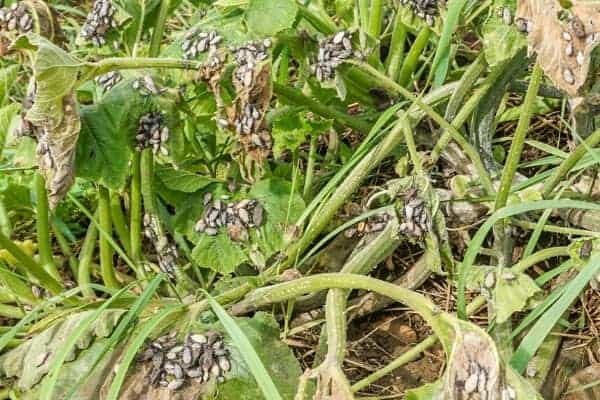
Squash bug nymphs attack a zucchini plant
7. Soap Spray
I don’t like to spray much of anything in the garden- organic or not- because of the affects it can have on good bugs and pollinators. But sometimes it’s a must.
But one option is to spray the bugs with soapy water. Usually about 1 tablespoon per gallon of water. You can use detergent like Dawn dish soap or castille soap.
Gently mix the soap and water and spray on the bugs you can find. You may want to water your plants afterwards to wash soap off the leaves.
Another thing to keep in mind when trying to get rid of squash bugs is to know your climate and insect life cycles. I know a lot of gardeners who can successfully plant squash later in the growing season and skip the squash bugs all together.
In my gardens, I have always found that it is better to plant early than late. That way I get a good month or 2 of squash harvests before the bugs get really bad. Experiment with planting times and see if a spring, early summer or late summer planting works better for you.
Good luck and Happy Gardening!
More Gardening Articles:
How to Control Cucumber Beetles Naturally!
How to Prevent Late Blight in your Tomato Garden
8 Ways to Improve Your Garden Soil for Free
How to Get Rid of Spider Mites Naturally

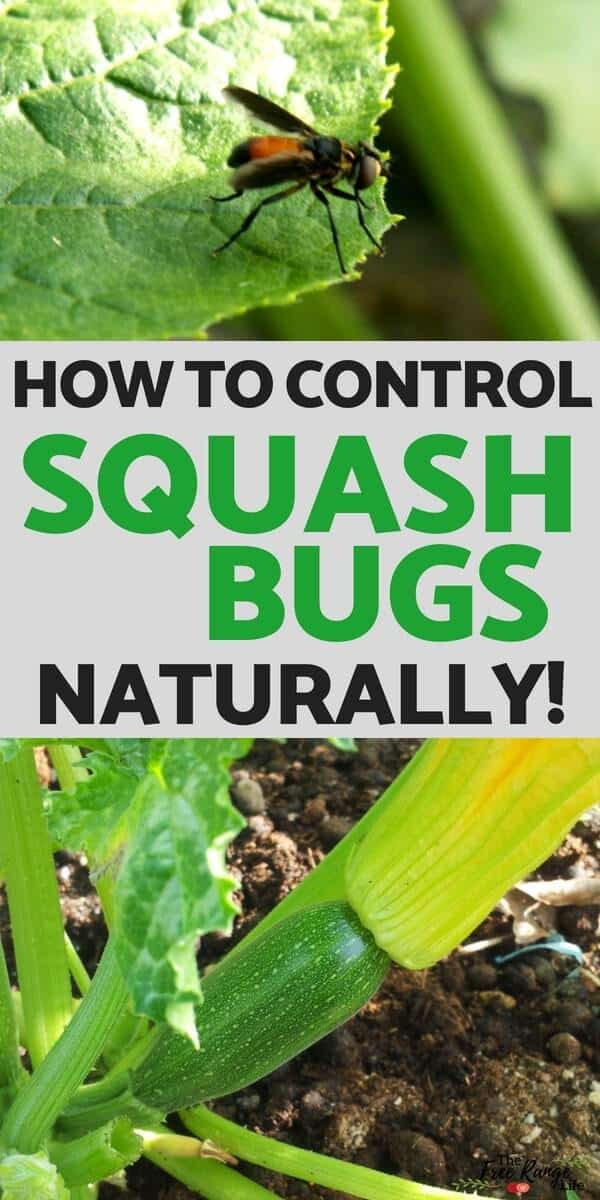
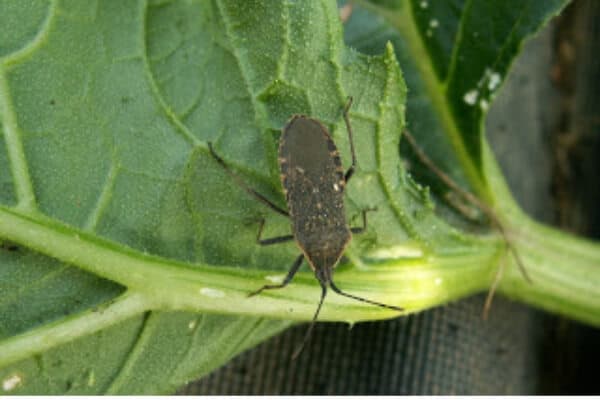
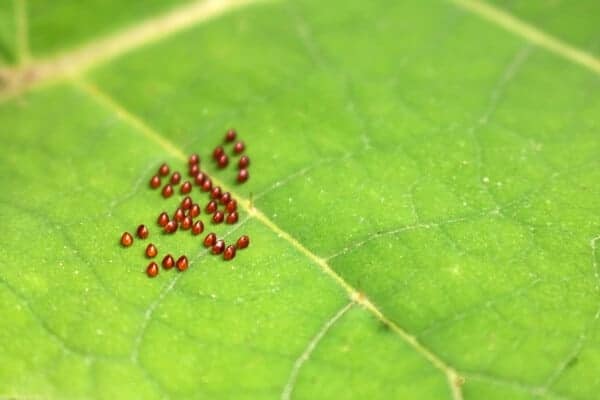
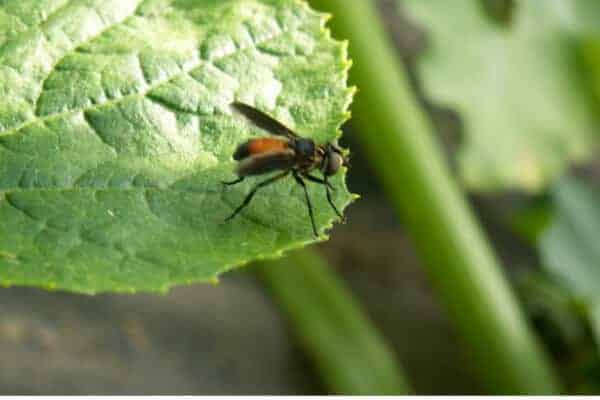
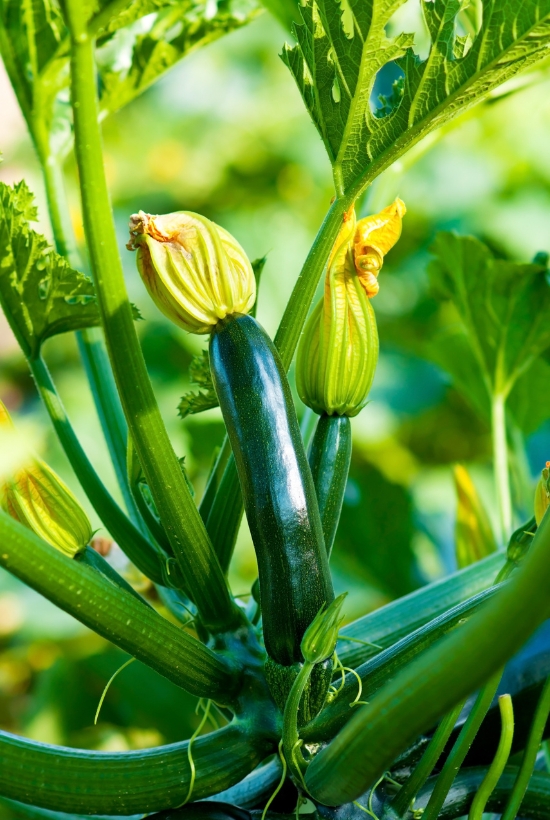


Hi Sara! What about squash borers? They bore into the plant underground. Those are what usually kill my beautiful squash plants. Have you had any problems with them? Thanks for sharing this valuable information! Blessings from Bama!
I have never had trouble with borers. I think that removing the bugs from the vines, planting more often- like every couple weeks- and a higher number of squash will help. Also planting as early as possible in the season to get squash before the bugs come out.
I haven’t tried this myself but some folks recommend wrapping tin foil around the base of the plant to deter squash vine borers. I have tried injecting plants with BT but that didn’t work for me.
Hi, Felecia!
We have success injecting BT into the squash/pumpkin vines. I save a syringe or two from the vet every year for this purpose. Good luck!
Colleen
What is BT?
bacillus thuringiensis
what is BT?
bacillus thuringiensis
I got to ask, for one why would a vet have a bascillus thuringiensis, and if you inject a vine with anything you are going to cause it to rot imho, all it takes is one bite from certain insects and your plants can get disease. I know it’s not the best way but you may have to spray a contact pesticide
Dude, the vet doesn’t have BT, it’s a commonly available organic pesticide at any local garden center or even Lowes or Walmart-she uses the syringe she procures from the vet to administer the BT, and it’s a good practice I’ve had much success with as well..
Hi Felecia – use Diatomaceous earth also for squash borers.
Dawn dish soap is the answer to all of your prayers! After having spent years of dealing with all kinds of pests in the garden and in the yard, I finally bought a hose end sprayer and a bottle of the basic dawn dish soap. Every year one kind of insect seems to be worse than the others and then the next year it is something else. The first time i used it I sprayed pretty lightly for the first few minutes and watched what happened. Not much. So i said screw it, lets give it a little flood and see what happens. I sprayed the tops, aimed underneath the leaves and then just let it rip until a small stream was running down the flower bed. Within minutes all sorts of critters were coming up and writhing in it. Nice! So I went through all my garden beds and then turned it on the lawn to kill fleas while I was out there. Next I went back to my garden with just water and rinsed the leaves off after all the bugs were dead so that my soapy leaves would not burn up in the sun. I found that this did an awesome job. Of course new bugs eventually will crawl or fly back in, so when I saw something turning into a quantity instead of just 1 or 2, I did it again. No hand picking bugs for me, yuck! I can usually go 3 to 4 weeks before i have to spray again. Best thing and the cheapest I have ever done. One of the secrets to dawn is that it breaks the oily barrier some bugs have so that instead of floating on top of water, they actually drown. The soap water in your garden also washes your plants, conditions your soil and makes it softer. Make sure you buy a hose end sprayer so that you can use the dial to control how much soap comes out. Experiment, you will find your happy spot. Good luck and I hope I saved you a lot of trouble, time and back pain =)
Actually this is a nice little list. We have done these things except the DE two years running and many more tricks found on the web. Two years running we have fought the bugs to no availe. This past growing season they literally wiped out 15 hills of Jack-o-lanterines all the Banana squash, we harvested 8 small spaghetti squash, and three tiny acorn squash. We lost all of our butternut and buttercup squash. We spent hundreds of dollars and hundreds of man hours using every thing natural organic and then into chemical. The extension service identified four different types of squash bugs. The summer squash was hybryd and treated and it lasted through out the year. We will NEVER plant heirloom squash again-learned that lesson well. I dont have the time to go out and pick bugs off over a hunder plants a year every day.
We used Dawn dishwashing liquid mixed with water and sprayed it on our plants once a week. We’d tried everything else on the farm, but that was the one thing which finally solved our issue. I never saw picking off bugs daily as a viable solution either, unless you have a very small garden.
I just saw a video on dish liquid & water to kill squash bugs. I filled a gallon sprayer with water, then added a table spoon of dawn dish liquid. I went to my garden and sprayed the area with the water hose which caused the bugs to come to the surface, then sprayed them with the soap & water. It worked! This mixture kills on contact and not be used as a preventative insecticide. It even killed a spider that had a 2 inch circumference.
Having read responses about squash bugs, in particular the comment Linda made about using Dawn detergent and water I was sceptical but gave it a try.
I put the computer down, mixed water with a little Dawn and started sprawing and every squash bug that had the spray on it fell over dead with seconds.
I sprayed under the leaves where hundreds of small squash were living and assume they also died but did not confirm.
This should also work on the eggs the vine borer moth lays at the base of the other plants like butternut squash.
I will know soon how effective this really is but my first try was very successful. Thank you Linda, where ever you are.
What was the summer squash treated with?
Useful info but fyi the “Newsletter” box on the left side makes your blog nearly impossible to read normally.
KK @ Preppy Pink Crocodile
Thank you for your comment. Can I ask what device you are using? I have tested on an iPad, smart phone and desktop computer with no trouble. The newsletter form on the left side will pop out if you scroll over it, but moving or clicking outside of it’s borders will close it.
I am on Firefox on an Windows machine, and if I make the browser window smaller (like half of my screen instead of the full thing) the Newsletter portion hides some of the text as you scroll.
Nice list. One additional way to evade squash bugs completely is to grow them every other year. When you do that, the overwintering bugs die out in summer, because they have no host plant in your garden the following summer.
One problem with over-planting is that you’re forever increasing the squash bug population by providing an abundance of host plant. You would have to plant more squash every year to keep ahead of the bugs. On the other hand, alternating years knocks the local squash bug population to virtually nil, and it takes awhile for bugs to find your plants and move in from other areas.
I just read this. I haven’t had squash or zucchini for two years and they are attacking my garden. Every day I come out and check my garden and there are so many of these bugs I can’t keep up with them.
??♀️
Maybe the every other year thing just doesn’t work? My garden is small, and they are ruining everything.
The biggest thing they seem to be going after is my watermelon. Darn things!
This method doesn’t work. I haven’t had squash for 4 years or more and they are back with gusto this year. I wish.
This year I planted marigold on all sides of my squash area plus put coffee grounds around the base of each squash plant. I did not have any trouble with the little buggers this year. I thought that maybe the coffee tweaked their nose and they could not find the squash!
Did you use used coffe grounds or grounds straight from the can??
Squash bugs are the most destructive pests in my garden. I try to pick them off & I’m diligent about my search but many years they take much of my crop. The worst year was when I mulched the tender young plants early in the season to protect against the drying winds we often get here in NE Texas. That mulch provided quite the haven for the squash bugs and my entire crop of varying squash varieties was wiped out. Lesson learned – I’ll never mulch around my squash plants again. Last year I was very diligent and although the squash bugs did win the war it was late in the season after I had eaten fresh & then preserved quite a bit of it. Thanks for sharing this post. (visiting from Green Thumb Thursday hop)
~Taylor-Made Ranch~
Wolfe City, Texas
I mulched this year with straw and had more squash bugs than my daughter who used black plastic mulch. I will not use straw again.I also used diatomaceous earth and hand picked. I was told to use a product with spinosad in it. I think I am going to try this next year. If this doesn’t work I will give up on growing squash.
Thank you for the info on the straw. This is our first garden here. I mulched with straw. We have tons of squash bugs. I have never had them before.
The nice thing about having cooler summers is less bugs, and we do not miss them. Thank you for linking up at Green Thumb Thursday ;)
I had squash bugs last year and didn’t grow any squash, and my nearest neighbor is 1/4 mile away and doesn’t garden. I’m not sure what they were after or if they were just confused. Thank you for sharing this at the HomeAcre Hop; I hope you’ll join us again this Thursday.
Kathi at Oak Hill Homestead
Great tips for this summer’s crops! Thanks for sharing on Tuesday Greens!
I have also read about Tansy as a companion plant…
You forgot skunks:
dallas.culturemap.com/news/restaurants-bars/07-21-13-texas-farmer-diaries-squash-skunk/
I have finally found a sure cure for the squash bug. I spent several years of planting “decoy” squash plants and, when infested, ripping them out and destroying all bugs. I would plant new squash plants a few days before that scorched-earth process. I have found something much better.
My new process is to leave about 100 feet of garden hose, full of water, in the full sun for a few hours. The water is too hot to touch, but when shot in volume at the base of the squash plant (they like to hide down there during the heat of mid-day) the little stinkers will come out in a swarm. Hose them all with the hot water, which will kill most. Keep hosing until you have drown all that you can see, being sure to knock them off of the plant.
I assumed that I would lose my test plant entirely (a zucchini) but it looks even better two days after the hot water attack. I did find ONE bug the day after the hot water; he came up to escape normal watering and I took him with a pair of tweezers.
Try this with just one plant; it looks to me like a solution for, at least, Zucchini squash plants. ENJOY RCR
Thanks for the tip!
OH, and it’s OK if the water eventually turns cold. The hot will have done its job, the bugs are dead or drowning and the cold may have helped the plant stand the initial hot shot of agua.
Hi Sarah,
I found the sure all organic treatment for squash bugs. I water the plants and watch for them to swarm to the top then I suck them up in my cheap wet/dry shop vac and drown them (no soap needed as they are enclosed in the vac). The easiest way to accomplish this is to have the plants that vine stay localized by creating an upward trellis for them to climb.
Sarah, that is a great tip
We use the wet/dry vac. to suck them off the plant and then suck up a gallon of soapy water and let them die. It works great and gets all those little tiny bugs that are so easy to miss and all the eggs.
I love the idea of planting nasturtiums. Would you just plant in the same hill or around where the vines are?
Thank you for all the great tips!
My garden is barely starting to show signs of producing fruit and like last year I got those nasty bugs again last year I used pesticide no results and again this year they are back my husband has picked them off one by one after reading your emails looks like I will be out there with my husband too.
Try a propane torch. Certainly damages the leaves of your zucchini plants, but 100% effective on the bugs. Especially good when you have missed some eggs and now have a bunch (50 – 75 – 100) chomping on your zucchini plant. You barely need to touch them. The flame is so hot their little legs are destroyed instantly and any that get missed can get torched later in the day. The little ones like to congregate, making them an easy target.
If I notice squash bugs early enough, I plan to spray the whole plant, top and bottoms of the leaves, with soapy water. It works on aphids and young insects with a thin exoskeleton. Young tender squash bugs should be susceptible too I would think. If the problem comes up and this method works, I’ll post the results.
Will love to hear if that worked. These bugs have killed my zuchini, then got yellow squash and yesterday have started on our cucumbers. There are hundreds of them…..so many to catch and squash.
the best way to get these buggers is companion planting, using row covers til the plants begin to bloom, and then saturating the plants with the soapy water method every three days. If you spray them early in the morning with the soapy water, be careful to do it early enough that the leaves dry off before the heat of the day. And you can coat the egg clusters with nail polish. This kills the eggs, and it hardens to prevent the eggs from hatching as well. Oddly enough, my pond fish wont touch these nasty insects either lol.. smart fish
To get the eggs off easier Use masking tape or duct tape wrap it around your hand with sticky side out. Other way is to cut leaves off or partial section that eggs are on and I burn them right away in a metal bucket or burn barrel.
I read where a mennonite farmer plants sweet potatoes among his squash to deter squash bugs. I tried this last year and the squash bug damage was greatly diminished over previous years, with no other treatments used.
I have found that Neem Oil works wonders. Last year I fought these buggers by picking them off every day. This year when my plants were starting and small I sprayed a light solution of Neem mixed with water and also sprayed the ground around the plants. The oil would force the big ones out where I could capture them, so no eggs from that mama bugger. I sprayed about once a week with neem oil and have just had a few but not too many that I couldn’t control. I have had enormous squash this year. Neem oil seems to be a cure all. I had spider mites on my green bean plants and it took care of those as well. I know alot of people worry about eating food after insecticides are used but it says it is safe for fruit and vegetables, so far so good here, still kicking…
If you’re going to pick the squash bugs here’s a tip: Duct tape works wonders for easily removing both eggs and the tiny just hatched beetles. Just spread a strip of it over the leaf and press it into the leaf. When you peel off the duct tape, the eggs and baby beetles will stick to the tape. it’s also a quick way to dispose of the adults. If you are growing a very large garden with lots of plants, hand picking my be too labor intensive, but if you are only growing a few, this method works wonders. C
I wonder if tangle foot would work? Any suggestions where on the plant to place it. Sticky stuff…
I use two methods against squash bugs, one is double sided sticky roach traps, placed on the underside of a piece of ply board, 6″ X 6″, set it down under plant with tape facing down on something to hold it about a 1/4 of an in. off the ground, once every day turn it over and pick off the squash bugs. The other is Dawn dish detergent, mixed, 1 tablespoon to 6 or 8 ounce spray bottle, if you see one spray it, and it will die! Duct tape works well for removing the eggs that you find!
I wrap the bases of my plants in tin foil and monitor when they grow if I need to add more. It deters the borers. Also, last year I successfully saved my plant from borers by doing a little “surgery”. I used a very sharp knife, cut a slit in the large affected stalk, removed and killed the larvae, and replant with any slit portion under the surface of the soil, packed real tight to keep the stalk together. Treat it like a new sprout. Water it more often than usual until it roots and grounds itself again from the injured areas.
I did not have any Squash bugs til last year. Crop failed. This year my husband put the compost in and I have volunteer plants. I have only seen three adult bugs (killed) and have picked several eggs. Can the eggs hatch once removed? I may have dropped a couple. I have raised garden beds made out of wood. I am mostly on rock. Would something else to make beds be better? Are the bugs hiding in the soil next to the wood?
My attempt to grow pumpkins this year has gone awry. My garden isnt large and I only have 2 plants but the squash bugs have surely been found. I am God of these pumpkins.. and as I peeked into my plants… imagine my dismay when I found 2 couples caught in the act. They didn’t even stop and even tried to hide. Squirt bottle didn’t work… so I ended up destroying the love party and breaking up the Brady bunch…hell they were probably related as it is… but so help me.. as judge of this pumpkin patch.. not in my house. Alas I found the clusters of eggs now.. will definitely try the duct tape. I commiserate over their consummation. Argh!
That’s how I find so many of them! Always connected at the, Umm, ‘hip’? Hate these bastards but I always love using a lighter to break up the love party! Ends it quick! That, and constantly squishing and scouring/searching for eggs!
When I had my condo, I grew zukes in tubs successfully. I had never seen a squash bug till I moved to my little farm in Rocky Ford CO.. I’m going to grow them in tubs this year. I put new dirt in those each year..
If you receive this reply, I’m curious to know what you mean by tubs? What sort of tub are you speaking about? If possible, please provide a description!! Thanks in advance for your help and/or guidance.
They got so bad we went and invested in a wet/dry vac. We added some soapy water and sucked those puppies right up! I spent too much time and money to let them eat up everything. Starting watching closer and maintaining.
Then here come the blasted BORERS! If its not one its another. The vine borer is that red thing flying around your crop with the black spots. They lay eggs at the base if the vine and when they hatch, into the vine they go. If you see something that looks like sawdust at the base….sorry!
To combat those, next season I used heavy duty foil and made rings, placed them in the soil and planted seeds in the middle. Then trained the vines on bamboo trellis’ to stay off the ground. It helped me visually. DE is used around the base as well regularly as needed. I will spray with soap and water once a month even if I dont see anything which is rarely. I always see some spawn of satan…lol
Three years ago I was overrun with squash bugs. Now I plant catnip and radishes with my squash and I haven’t seen one in two years. I’m in AZ so my squash has been in the ground since March.
How close to the zucchini do you plant the catnip and radishes?
They say to plant calendula and marigold next to the squash but that did not help me!! I have calendula and marigold that reseeds itself every year in my yard and grows whether I want it to or not. But I was slammed with squash bugs this year–before I knew what was going on, I had a massive hive of them eating everything I planted. The calendula and marigolds grew all around them and it had no affect. I’m in a particular hot area of Utah
I’ve also planted marigolds near my squash for the last two years and it hasn’t helped a bit either, plus I have always picked off the bugs when I find them and scraped off the eggs from under the leaves. I have also tried nasturtiums but found them hard to grow and by the time they did the squash bugs had already taken over. This year I plan to buy them already started so I can get them in the ground as soon as I put the squash plants in.
When all else fails, I use Cutter Backyard Bug Control, from Walmart, which you connect to your hose. This got rid of my squash bugs, last year along with those pesky mosquitoes. Squash bugs Suck!
How do you keep spray bottle from clogging? Have tried soapy water and chilli and garlic, but always clogs.
I use a dish soap bottle, not one that works like a spray bottle. It does spray a lot, but does not clog.
I have just found these Squash bugs in my zucchini for the first time. I have never heard of them before and at first thought they were stink bugs. They wiped out my whole planting this year. This totally explains what has been happening to my plants. The first year I had a garden I had zucchini out my ears and slowly they withered year by year. I think I will just buy it at the store now.
I only have a few veges. Now. But I do raise Monarchs and Swallowtails. The TFly got more than half of my catapillars. Like to know how to get rid of them.
Other things get them too. But not as bad.
The best solution I’ve found so far is the board trick. Cut a few pieces of plywood about 1′ x 1′ square and lay them around the base of the pumpkin or squash. Early every morning, get out your shopvac with the brush attachment, lift up the boards, and suck those little critters up. Also check the plant and the vines. You must check every leaf too and get rid of those eggs. I just use a little toothpick and scrape them into a small bowl full of hot soapy water which goes down the garbage disposal. It’s non-stop war with those things until harvest.
I went 2 years without planting a crop, and the damn things attacked my sunflowers! I’ve never seen a squash bug do that before. They were much easier to find and terminate though. Going through a 1/4 acre pumpkin patch, while not that big, is still a huge task.
Neem oil mixed with dish soap works!
The squash bugs and squash borer destroyed all of my zucchini plants even though I hand picked daily and hit them with a water hose so they would come up. Now they are on my tomatoes taking bites. They just never give up.
My favorite method of killing squash bugs is taking the shop vac out to the garden. Soapy water in the bottom of the vac tank, then get to sucking the filthy buggers off my plants. It’s quite satisfying to take the top off afterwards and see the vac full of dead floaters, heh.
I have had squash bugs over the years but was able to harvest enough squash to freeze. For this year we burned all the vines and tilled the garden twice in the Fall and twice in the Spring. After I planted my seedlings this Spring, I noticed two adults in the first two weeks. I squished them and checked for eggs frequently. I found several clusters on a several plants and notched them off the leaf and put them in the burn drum. This was late May early June.
I am vigilant and have not seen any more of those gray adults but have seen about three of the moth of the squash vine borer. They are red/orange with black wings. I dread these more because they lay their eggs at the base or close to the base of the plant which are harder to spot.
I have been making my own concoction after searching the internet. You all know that rhubarb leaves are poisonous, yes!!! So after I make my rhubarb sauce, I put the leaves in a stock pot and boil them to make a brew. Cover with water and cook for about 30 min. or longer. You can steep overnight or just pour the brew into a bucket to cool and then discard the leaves.
To the brew I add approximately 1/4 cup dish soap and 1/4 cup hot pepper sauce, more or less, mix thoroughly and strain is necessary. I add water to my watering jug (2 gal.) and add at least 1 & 1/2 liter of brew to the water. Fill the jug to the top and water down inside the plant, around the root and soil of the squash plants. I haven’t seen any bugs lately but I keep checking often or daily, when it isn’t raining. I used this mixture on my cabbage plants about 3 days ago but haven’t checked yet to see if it is working on cabbage worms. They are my biggest problem.
Stupid squash bugs!! I had no clue that the bug I found on my plant was this stupid squash bug until recently.. It’s my first years growing pumpkins… Who knew that there were these ugly things that love them so much. Ugh.. Tonight I sprayed it down with neem oil. Tomorrow will be the shop vac and tape! Then I will be spraying them down with dawn plus DE! All of yalls tips and tricks will be applied to this lovely patch of mine that I WILL SAVE… hopefully! Im in Arizona so they have been growing since March/April time frame. To much water, time and effort has been put in to let these darn bugs win! It is war! I will succeed! aye… Again, thanks for all of the tips! They will be used in the next couple of days/weeks/ months! <3